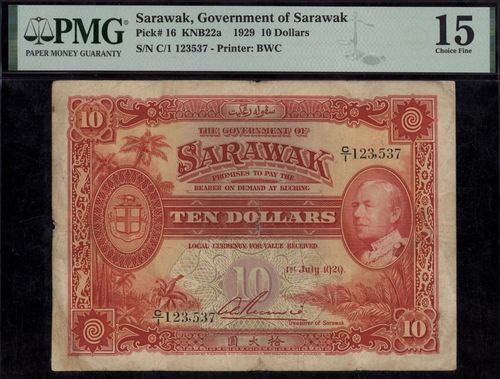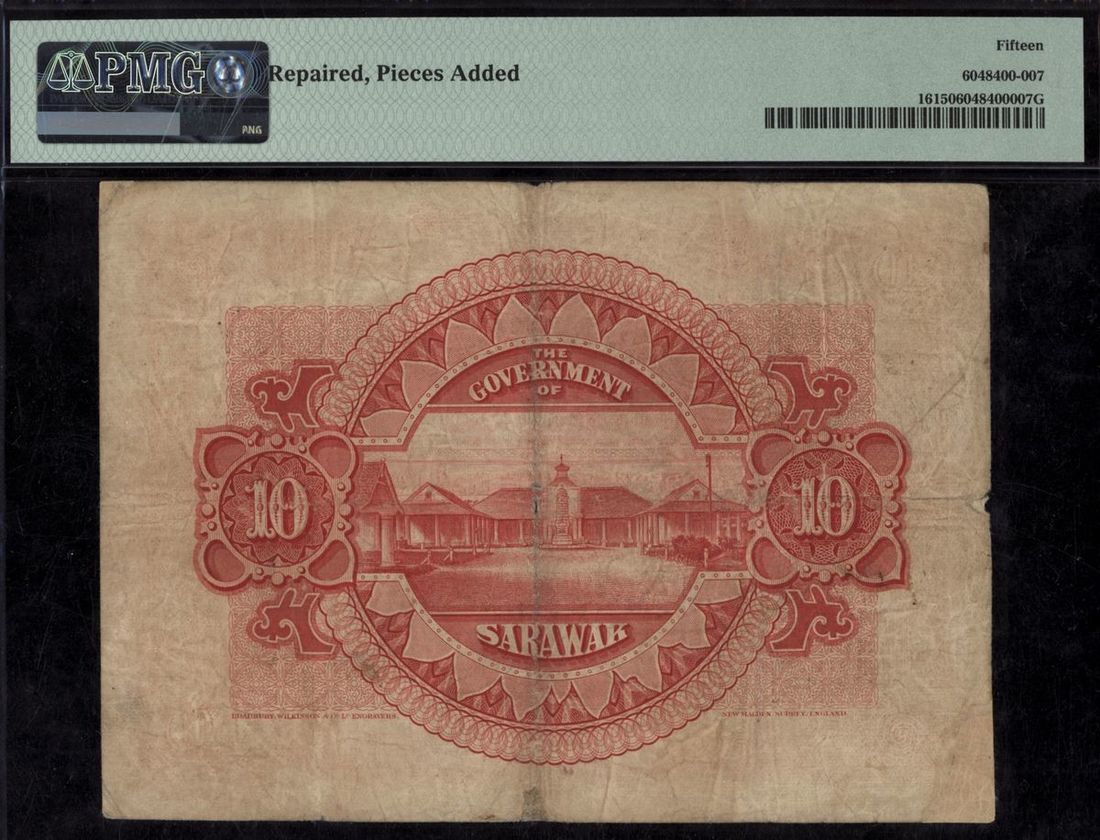Auction: 391 - World Banknotes at NY INC
Lot: 439
Government of Sarawak, $10, 1st July 1929, serial number C/1 123537,
the establishment of the government of Sarawak can be traced back to the mid-19th century when James Brooke, an English adventurer, became the Rajah of Sarawak in 1841. His intervention in quelling a rebellion for the Sultan of Brunei led to the establishment of the Brooke administration, marking the beginning of Sarawak's modern history. The Brooke family, with succeeding generations inheriting the title of Rajah, ruled Sarawak as a personal kingdom until Charles Vyner Brooke ceded the territory to the British Crown in 1946.
During World War II, Sarawak experienced Japanese occupation from 1941 to 1945, followed by a period of British Military Administration until the return of the Brooke family. However, financial difficulties led to the cession of Sarawak to the British Crown in 1946, transforming it into a British Crown Colony.
Sarawak played a crucial role in the formation of Malaysia on September 16, 1963, joining Sabah, Malaya, and Singapore. This decision was motivated by economic considerations, security concerns, and the aspiration for political stability. Notably, Singapore eventually withdrew from Malaysia and became an independent state in 1965 due to political and ethnic differences. Sarawak and Sabah, however, remained integral parts of Malaysia.
Post-independence, Sarawak retained a significant degree of autonomy through the Malaysia Agreement, overseeing areas such as immigration and land rights. The state has its own government, with a Chief Minister and State Legislative Assembly.
A fascinating aspect of Sarawak's economic history comes to light through particular banknotes issued by the Government of Sarawak. Noteworthy among them is this $10 banknote printed on the 1st of July 1929, distinguished by the serial number C/1 123537. Graded as 15 Choice Fine by PMG, this banknote holds historical significance. Encased in a PMG holder, it serves as a tangible link to Sarawak's financial legacy, reflecting not only the economic transactions of its time but also the resilience and evolution of Sarawak's monetary system. Today, as Sarawak remains an integral part of Malaysia, these artifacts continue to offer insights into the region's unique economic journey, complementing its cultural diversity and contributing to the broader narrative of Malaysia's history
(Pick 16, BNB 215), in PMG holder 15 Choice Fine, repaired, pieces added
Sold for
£520







